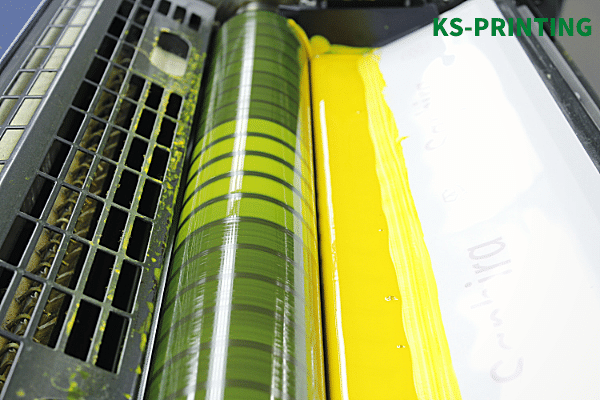Quality indicators of printing ink control | KSPRINTING
2021-04-25
The ink used on printed packaging is a homogeneous mixture of coloured substances (such as pigments and dyes), binders, fillers, additives, etc... It can be dried on printed materials coated with paint.
It is a paste-like binder with colour and some fluidity. So colour (hue), body bone (thinness, flowability and other rheological properties), and drying properties are the three essential properties of the ink.
What are the printing ink binders?
In the printing process, ink is the material used to form the visual information, so it plays a vital role in printing and directly determines the tone, colour and clarity of the image on the printed product. When printing, we need to know the composition and classification of inks.

What are the technical specifications of printing inks?
Printing inks for printed packaging should have vibrant colours, good printability and suitable drying speed. Inks are used in the printing and packaging industry, and pigments and binders are the two primary raw materials of inks.When operators of printing choose inks, the colour is generally the first requirement, and the colour of the ink (hue) is one of the intuitive indicators. It is, to a large extent, a significant indicator of the quality of the printed material. Therefore, the quality of the pigment plays a decisive role in the role of the ink.
The ink should also have a certain amount of solvent resistance, acid resistance, alkali resistance, water resistance, light resistance, heat resistance and other application indicators. With the printing, paper and other requirements are increasingly high, the technical specifications of the ink are also improving. For example, modern high-speed multi-colour printing presses and multi-colour rotary presses require ink to dry in seconds or even faster. Glass cards, gold cards, silver cards, coated paper all need bright ink. Printing plastic film requires a good bond with the plastic film or a more excellent adhesion to the ink on the plastic film. Printing special printed packaging requires photo-sensitive inks, etc.
KSprinting has accumulated a wealth of printing experience during more than ten years of printing research and is very strict about the quality control of printing inks. Schools around the world well receive our children's book printing and textbook printing. We welcome your communication and inquiry, and we will reply as soon as possible.








































